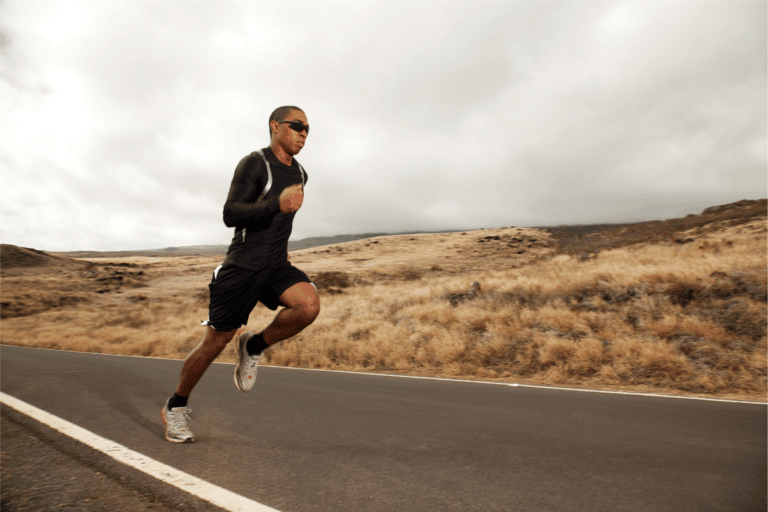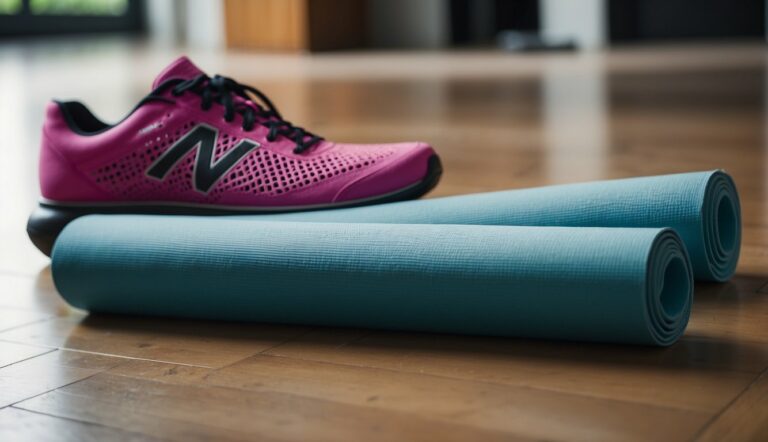Are Stationary Bikes Good for Runners? [Plus 3 Great Recommendations]
Runners are constantly seeking out ways to improve their performance. Increasing your running volume would be optimal, but this isn’t always possible for various reasons. Runners may not have the time or the capacity to recover from high volumes of training. Luckily, there are many cross-training alternatives to improve running performance. One of these is stationary bikes. But are stationary bikes good for runners?
Stationary bikes are good for runners as a supplement to their regular runs. By riding stationary bikes, runners may improve their cardiovascular fitness and muscular endurance while recovering from high-impact runs. They are also a good workout alternative to a treadmill when the weather doesn’t permit an outside run.
Read on to learn about the benefits of stationary bikes for runners, the various situations in which runners can use stationary bikes, and our top picks for runners to purchase!
How does a stationary bike benefit a runner?
Over the last decade or so, stationary bikes have become all the rage! From the likes of Peloton to Nordictrack, stationary bikes have taken the main stage of fitness.
As with many trends, it’s good to do some proper research before diving in and getting swindled by marketing tactics. Luckily, stationary bikes have very real benefits for people across all walks of life, including runners.

The following five reasons all contribute to increasing the performance and overall health of runners:
- Improves cardiovascular fitness
- Helps build lower-body muscular endurance
- Great for recovery
- Can help runners lose weight
- Allows runners to exercise in any weather
Stationary bikes benefit runners by allowing them to improve their cardiovascular fitness with low-impact activity; this is ideal for recovery purposes. Better yet, stationary bikes are convenient and easy to use.
In a study performed in 2015, strength and conditioning researchers set out to determine the effects of high-intensity interval training (HIIT) with stationary bikes on running. The results were favorable!
The study found that various HIIT training cycles gave runners different results in terms of performance. In runners who cycled with less rest time, their 3k times improved by a high margin. In runners who were allowed more rest time, their times till exhaustion increased tremendously!
Given these findings, it is apparent that stationary bikes are a great tool for runners to use to improve their running performance. Runners can tailor their workouts by adjusting rest times to achieve the results they desire.
Improves cardiovascular fitness
One of the most important aspects of running is cardiovascular fitness. Without a strong and healthy cardiovascular system, runners cannot perform at their strongest.
Stationary bikes help runners improve their cardiovascular fitness by increasing their VO2 max and lowering their rate of perceived exertion.
By riding stationary bikes, runners can improve their cardiovascular fitness without placing excessive strain on their bodies.
Across six studies, researchers found unanimously that consistent indoor cycling led to improved VO2 max measurements and lower rates of perceived exertion, or RPE.
By improving VO2 max measurements with cycling, runners can train their bodies to use oxygen more efficiently, subsequently improving running performance.
Lower RPE is also great for runners because it indicates their bodies have adapted and become more efficient.
Builds lower-body muscular endurance
Maybe cycling improves your cardiovascular fitness, but does biking help with running endurance?
Another piece of the running pie is building a strong lower body. Even with a sufficient cardiovascular system, runners must have strong legs to propel themselves to the finish line.
Using exercise bike training for endurance, runners can improve their lower-body muscular endurance. Many stationary bikes offer resistance options that can further help runners enjoy strength gains.
For muscles to gain strength, grow in size, etc., they must be sufficiently stimulated. Enter stationary bikes.
Riding a stationary bike is great for runners to build lower body endurance because it requires lots of leg strength to pedal over a long period of time.
This then has the possibility to directly carry over too long races when runners’ legs start to feel heavy; riding the stationary bike can help put off that feeling.
Additionally, many stationary bikes offer an option to increase the resistance on the pedals. If runners are not being challenged, they can increase the resistance to an appropriate level to stimulate muscle growth.
Great for recovery
Finding a form of cross-training can be difficult for runners. Cross-training should add to a runner’s training regimen, but it must also be easy on the body to allow for recovery.
Stationary bikes are great for helping runners recover from running. By riding stationary bikes, runners can increase blood flow to their legs to give their muscles sufficient oxygen for recovery.
A study performed in 2017 found that increasing blood flow has a positive effect on performance recovery. By increasing blood flow, runners can recover quickly and completely – another one of the benefits of indoor cycling for runners!
Cycling on stationary bikes does just this. The increased blood flow to the legs through movement and aerobic exercise helps provide oxygen to the muscles for recovery purposes.
Another benefit is that cycling is easy on the body. Running is high-impact and very demanding because the joints and muscles endure lots of pounding; cycling is quite the opposite.
It’s a very fluid motion through which runners can move without placing strain on their joints.

Can help runners lose weight
Many runners begin running to help shed extra pounds along their weight loss journey. It turns out that stationary bikes can be a great tool for runners to lose extra weight and improve their health!
Stationary bikes help runners lose weight because cycling is an aerobic activity that burns a high volume of calories quickly.
Similar to running, adding a stationary bike workout for runners can help burn many calories because it is also an aerobic activity that substantially elevates the heart rate.
In fact, stationary bikes average burning about 10 calories per minute. Simple math then reveals that an hour on the stationary bike can burn as much as 600 calories! Pretty amazing.
Additionally, cycling is a form of exercise that has begun to see lots of use in treating type 2 diabetic (T2B) patients. When cycling is performed regularly by these patients, they enjoy significant weight loss and lower blood pressure as well.
Running burns many calories on its own; adding cycling to the mix is another great way to lose extra weight!
Allows runners to exercise in any weather
Part of the issue with running is that Mother Nature isn’t always the most cooperative. Riding a stationary bike solves that problem.
Riding a stationary bike allows runners to exercise even when the weather isn’t suitable for running.
Whether it’s heat waves during the summer or tundra-like weather during the winter, there are countless scenarios in which running is not exactly ideal.
Stationary bikes have the potential to solve this. While runners may not be able to go and run outside, stationary bikes can be set up indoors and ridden whenever they please.
When extreme heat strikes or a torrential downpour announces itself, runners can ride stationary bikes to work on their cardiovascular fitness all the same!

Is a stationary bike a full-body workout?
One of the most effective forms of exercise is performing full-body workouts. This is because full-body workouts are well-rounded and ensure no muscle is neglected.
Are stationary bikes conducive to getting a full-body workout?
Unfortunately, stationary bikes do not provide a full-body workout to their users. While stationary bikes are great for lower-body exercise, they do nothing to stimulate the upper body.
Stationary bikes contain many benefits for runners; providing a full-body workout is not one of them.
As established before, stationary bikes are wonderful for stimulating the lower body and building muscular endurance. This occurs because the quads, hamstrings, and glutes must work in tandem to pedal for a long period of time.
Cycling, however, does nothing for the upper body. A runner’s chest, shoulders, and back will be severely neglected if they rely on cycling for a full-body workout.
The upper body is not working because there isn’t much active stimulus on the upper body muscles. At most, they are held in an isometric contraction to provide stability and balance.
Runners are better off performing separate resistance exercises for their upper bodies rather than relying on stationary bikes.
How many miles on a stationary bike is equal to running?
For runners who supplement their running regimen with stationary biking, how many miles do they need to perform on the bike to achieve their running goals?
The mileage performed on stationary bikes follows a 2:1 ratio when compared to running. For every 2 miles biked, this is equal to approximately 1 mile of running.
Generally, researchers have claimed that every 2 miles biked equate to one mile of running. This claim is made on the basis of calories burned.
1 mile of running is estimated to burn 100 calories, whereas 1 mile of biking burns 50 calories. In this way, 2 miles of biking is equal to 1 mile of running.
Luckily, stationary bikes mimic running in the fact that they require constant leg motion. This means stationary bikes require fewer miles than outdoor bikes to equate to running miles.
Exercise bike vs treadmill – which is better?
When the weather outside is less than ideal, runners are typically left with two indoor options: a treadmill or stationary bike. Which is best for runners?
Both the treadmill and stationary bike are good for runners; the best one for you will depend on your specific goals. If you are aiming to burn calories and improve your running performance, it is better to run on a treadmill. A stationary bike will be a better fit if you are trying to cross-train and recover.
Whether or not a treadmill or stationary bike is better depends solely on the circumstances of the runner.
The best way to improve at running is to run; who would’ve thought? The treadmill is the superior option for runners who want to work on their speed and performance in preparation for a race.
Recent findings found that treadmill running, while not exactly the same as running outdoors, almost identically mimic outdoor running. This makes it a great alternative.
For those looking to lose weight, a treadmill will also be better. Running burns more calories per mile than biking, so opt for the treadmill to burn some quick calories.
On the flip side, for runners looking to recover or cross-train, the stationary bike is an excellent option that will be of better use than a treadmill.
Stationary bikes provide low-impact activity to avoid placing excessive stress on the joints. They also increase blood flow to the legs, which helps muscles recover quickly.

Best intervals cycling workout for runners
Famed running coach Tom Miller P.h.D. (author of Programmed to Run) advocates what he refers to as the Bike S.H.I.T. method (Standing Hill Interval Training.) This training method was method was the subject of his doctoral dissertation, and found that runners who added this type of standing stationary bike interval training to their normal training once per week for six weeks shaved an average of four minutes off their 10k times.
Miller found that completing these intervals in a standing posture was able to mimic the act of running in the hips, knees, and ankles.
Check out his effective wheels workout in the table below.
| Warm-Up: First 10 minutes | Pedal nice and easy from a seated position to warm-up. |
| Ramp-Up: 30-60 seconds | turn up the resistance on your bike, enabling you to stand up in your seat, but not so much that you can no longer pedal fast. Maintain between 75 and 90 revolutions per minute (RPM). Keep this high intensity for this period of the workout. |
| Cool Down: 75 seconds | Gradually reduce your revolutions and decrease the resistance. Sit down and pedal easy once again. |
What are the disadvantages of a stationary bike?
In every aspect of life, trade-offs are prevalent. There must always be drawbacks, unfortunately.
Stationary bikes are no different.
The following downsides must be considered when deciding whether to exercise with a stationary bike or even purchase a stationary bike:
- Some models are extremely expensive
- Does not provide the same benefits as outdoor cycling, such as receiving vitamin D from the sun
- Can be boring to sit in the same spot
- Guided workouts are not for everyone
- Takes up a lot of space
While stationary bikes are great and provide many benefits for runners and other athletes alike, they also have their downsides.
Does outdoor cycling improve your running?
While using a stationary bike may be the easiest way to access the benefits of cycling, outdoor cycling can also be a great cross-training exercise for serious runners. The variation of different terrains and the ability to participate in aerobic activity for a longer period of time makes cycling a great choice if you’re looking for an activity with a lower impact on your joints and muscles.
With the popularity of triathlons, many extreme long-distance runners eventually also make a foray into the world of cycling. If you want to mix up your endurance training, give cycling a go!
What’s the best stationary bike
You’re in luck if you’re still interested in incorporating a stationary bike into your exercise routine!
Here are our top stationary bike picks:
- Best on a budget – Yosuda Indoor Cycling Bike
- Best classes – Peloton Bike+ Ultimate
- Best portable – Maxcare Folding Upright Exercise Bike
Let’s take a look and each of these.
Best on a budget: Yosuda Indoor Cycling Bike
For those on a budget, try out the Yosuda Indoor Cycling Bike.
The Yasuda Indoor Cycling bike offers great quality at a low price point of $209.99. It can be easily ordered on Amazon and has extra features like a water bottle holder and a place for your device.
Ultimately, you get what you pay for. While this Yosuda option does not have any fancy technology or classes, it is great for runners who don’t want to splurge on a bike.
The Yasuda indoor bike comes at an affordable price point and boasts many excellent reviews on Amazon and the Yosuda website.
The general consensus among reviewers is that it’s easy to assemble, comfortable to use, and a great overall bike!
Best classes: Immersive Peloton Bike
For those willing to spend a pretty penny for a high-quality bike, consider the Immersive Peloton Bike.
The Immersive Peloton Bike comes in at a high price point of $1,245, but for good reason. The bike offers membership services through which subscribers have access to an expansive library of classes and workouts.
While expensive, this Peloton bike is worth the money.
With a Peloton membership, users can watch workouts and classes on the 22-inch screen that the bike comes with. The classes are not limited to biking either; they include yoga and strength workouts as well!
Additionally, the bike is compact and great for saving space in a home or office. Consumers have raved that the bike is high quality and one of the best investments possible in your health.
Best portable: Maxcare Folding Upright Exercise Bike
For those who travel frequently or need a bike that doesn’t take up much room when it’s not being used, consider the Maxcare Folding Upright Exercise Bike.
The Maxcare Folding Upright Exercise Bike provides flexibility and quality for a reasonable price of $259.99. The bike is easily folded up and moved while still providing stability.
This Maxcare bike is great for all ages and provides convenience to its users. It can be easily folded up and transported or stored away!
On top of this amazing feature, the bike has a device holder and monitors to track heart rate and speed or distance statistics.
Reviewers tout the bike as easy to put together, great quality for the price, and lightweight for easy transportation and storage!
Why should runners ride a stationary bike
If you’re a serious runner, you can benefit greatly from cross-training with a stationary bike. Using a stationary bike is a great, weather-independent, low-impact method of getting to your peak VO2 Max levels and improving your endurance.
How much does a stationary bike cost
Stationary bikes can range in price from $200 off-brand spinners to $1,400+ Peloton and Nordic Track machines.
How often should I incorporate stationary bike training
If you’re already consistently running, incorporating a stationary bike workout 1-2 times per week should be enough to see improvement over a number of weeks. Just ensure the work you’re doing is sufficiently difficult.






